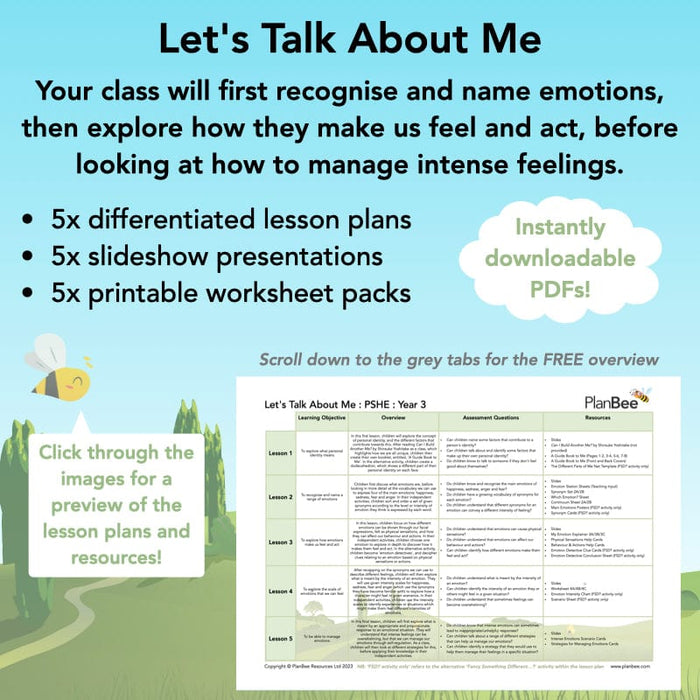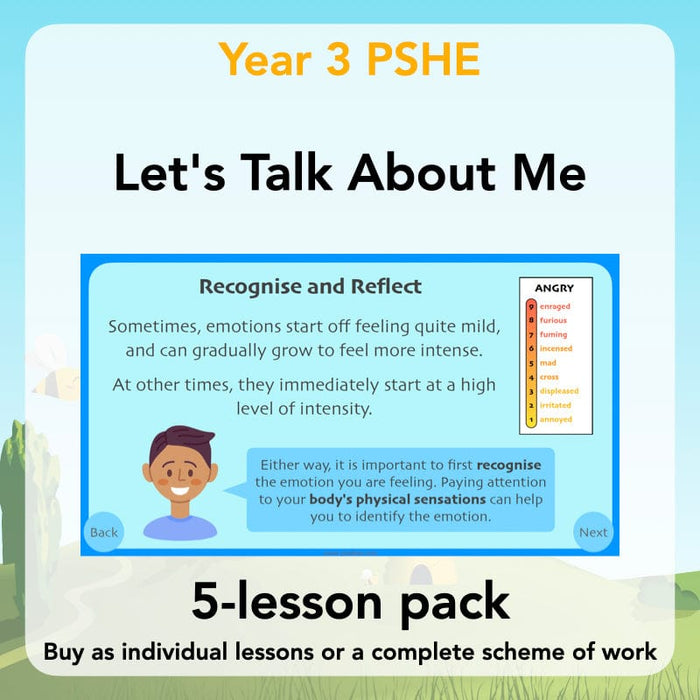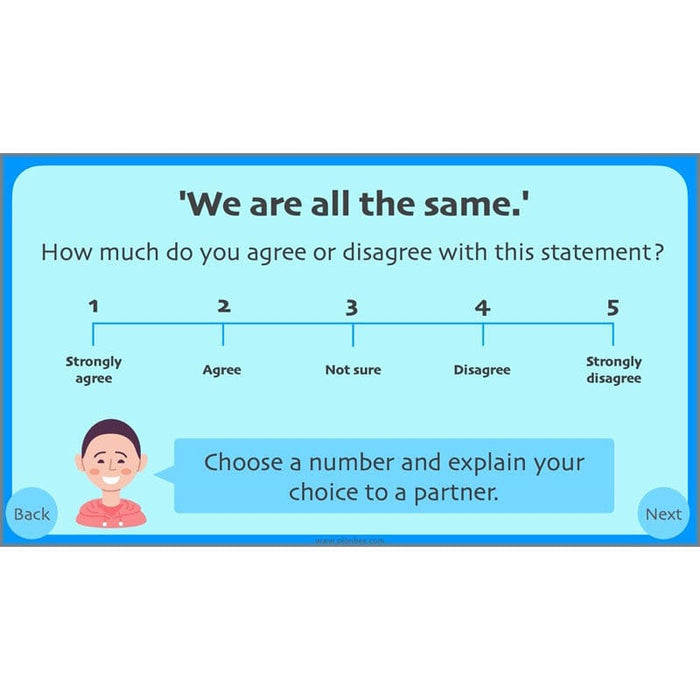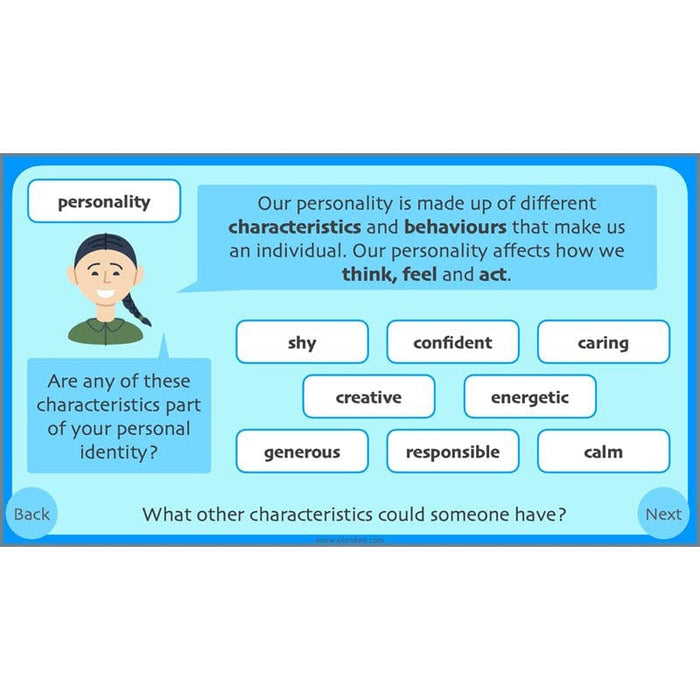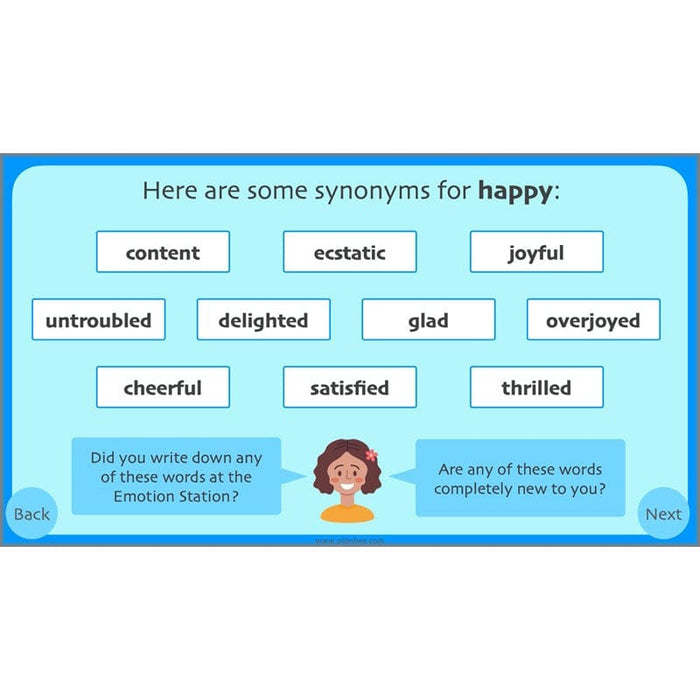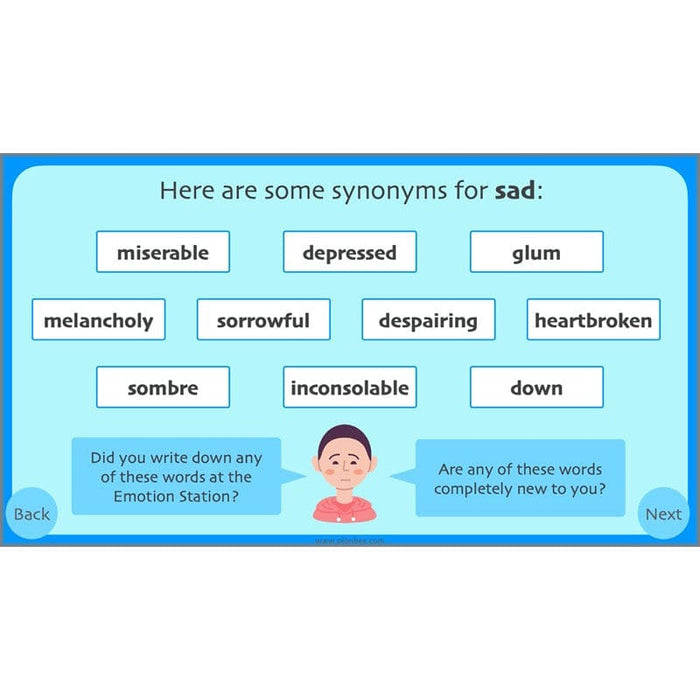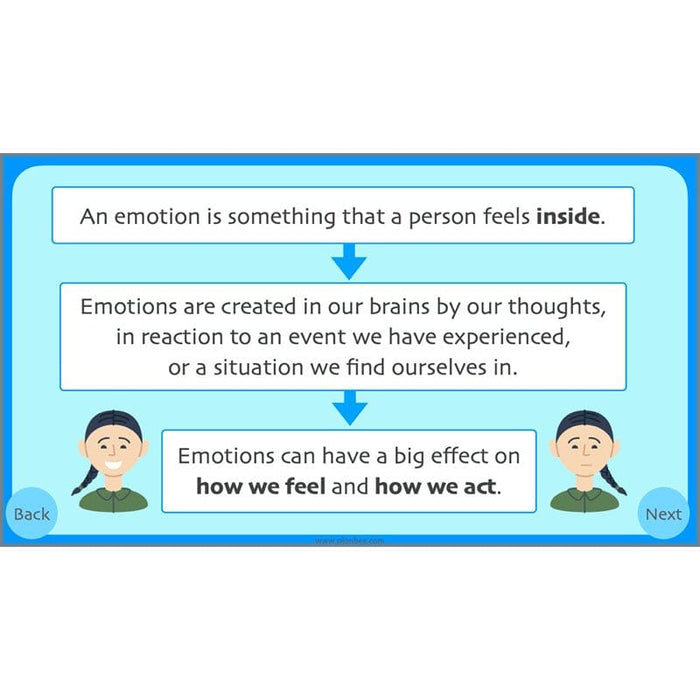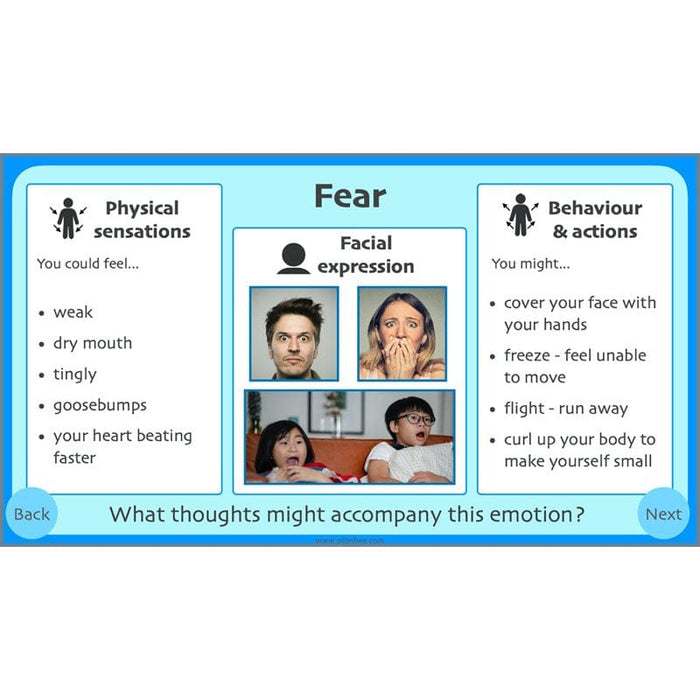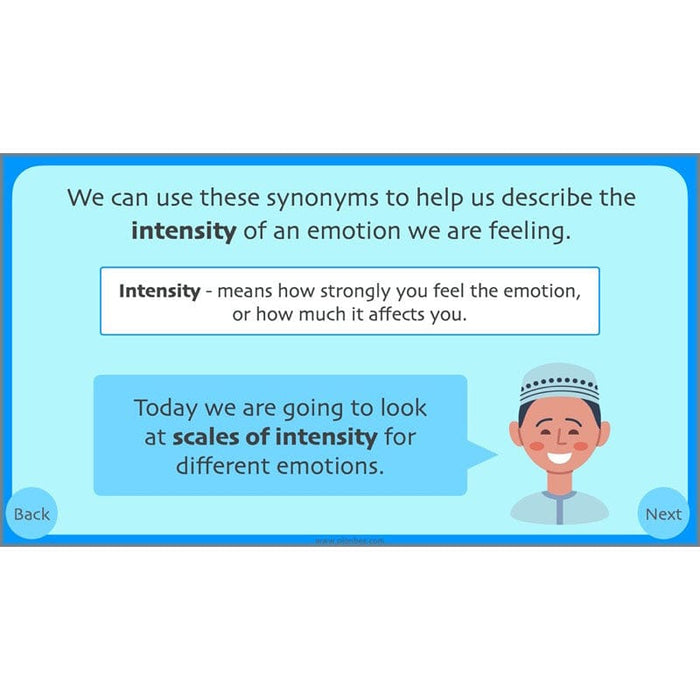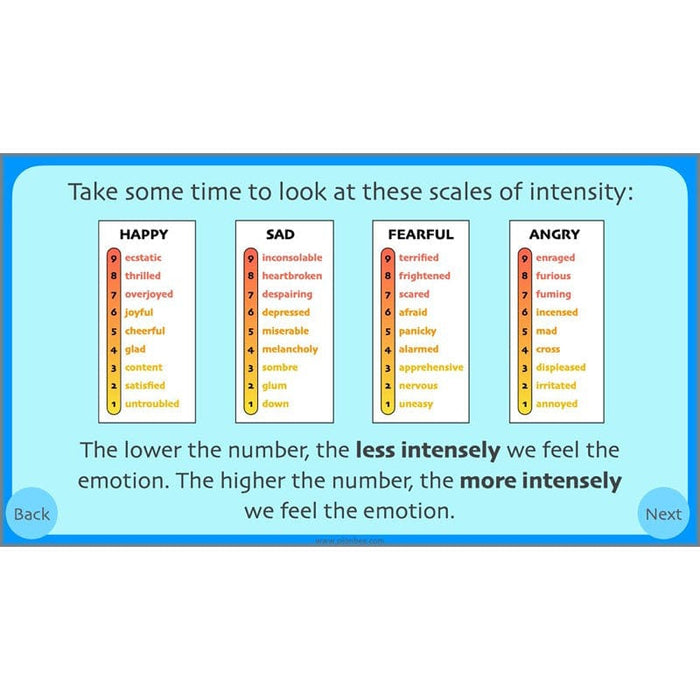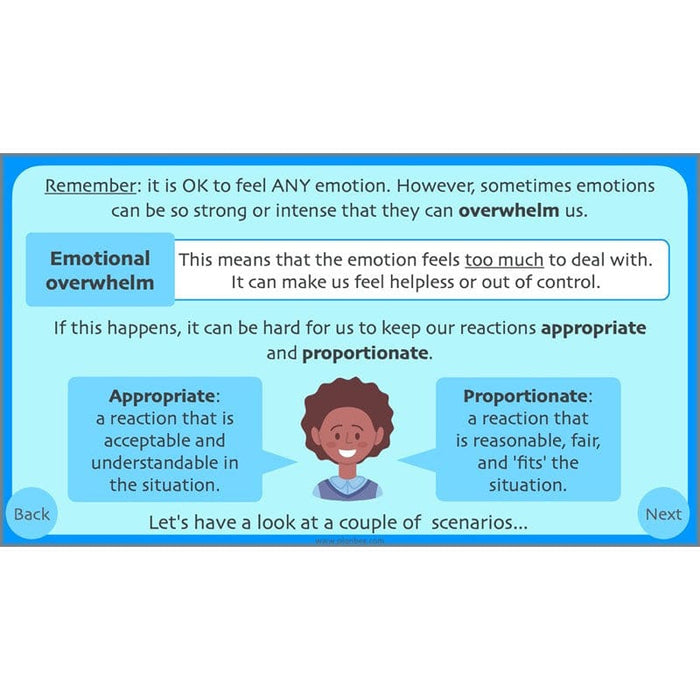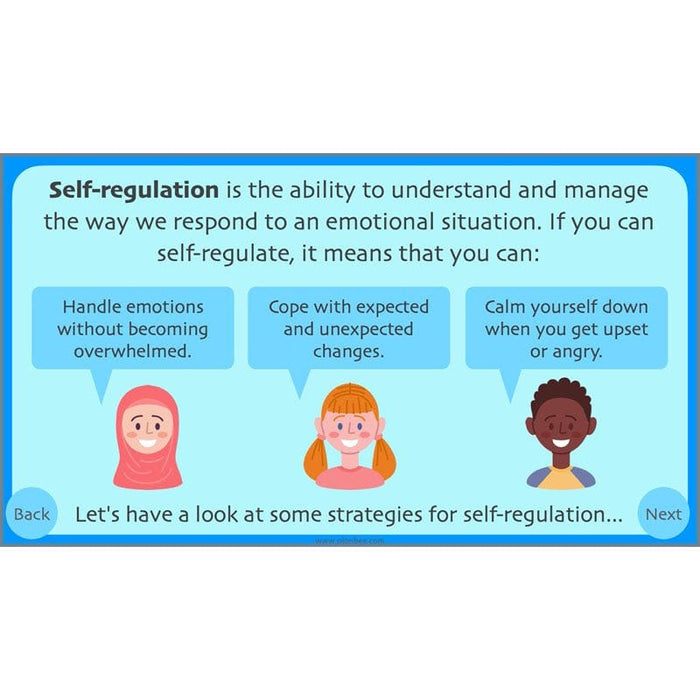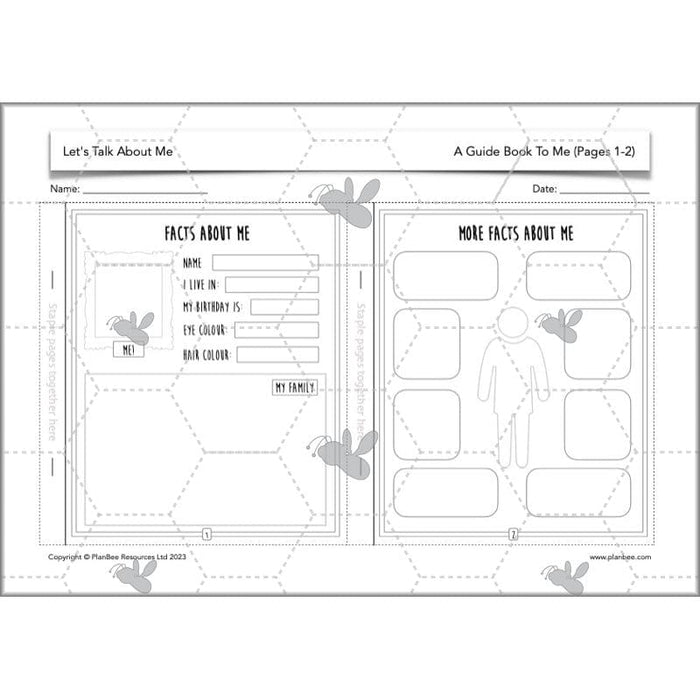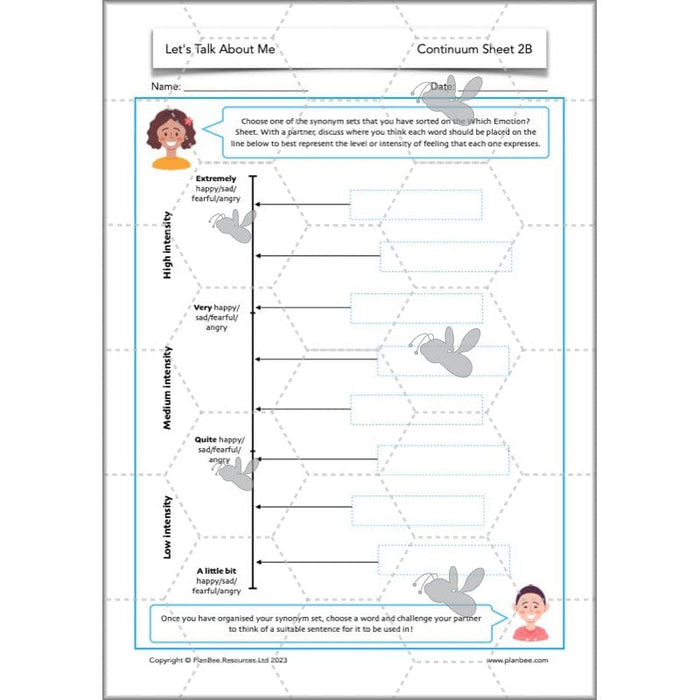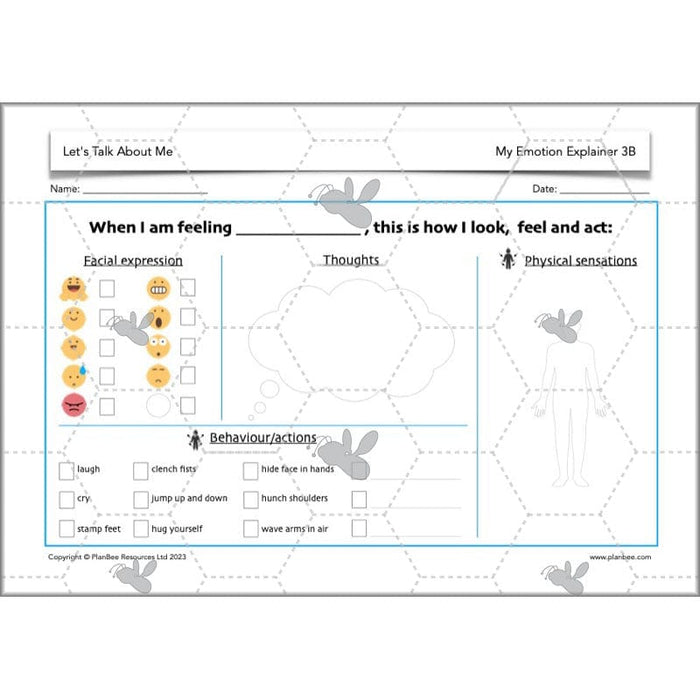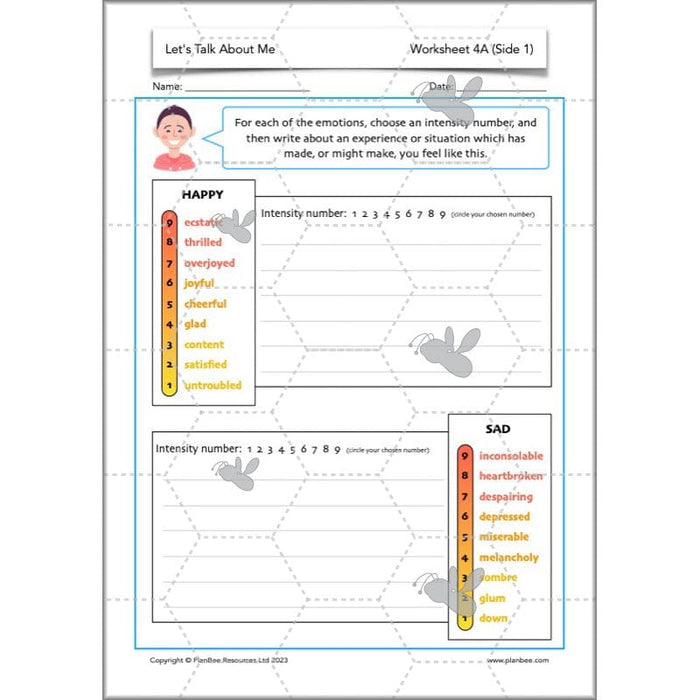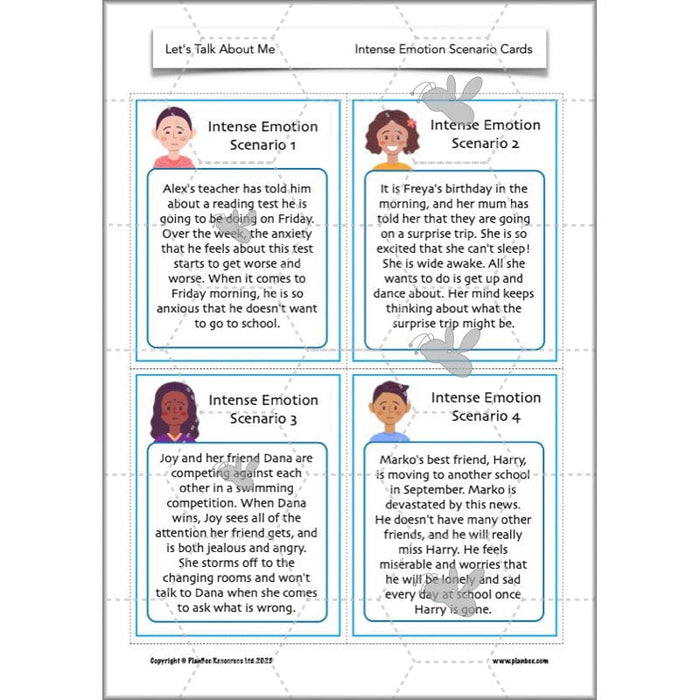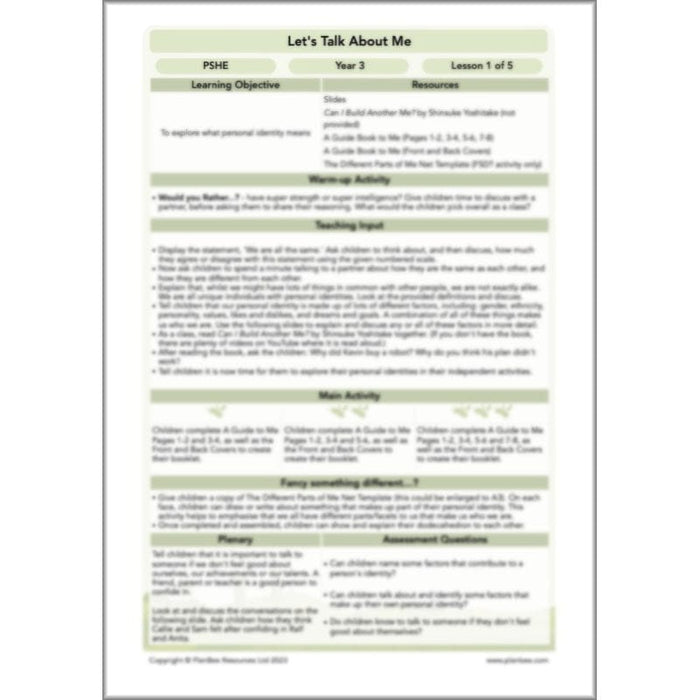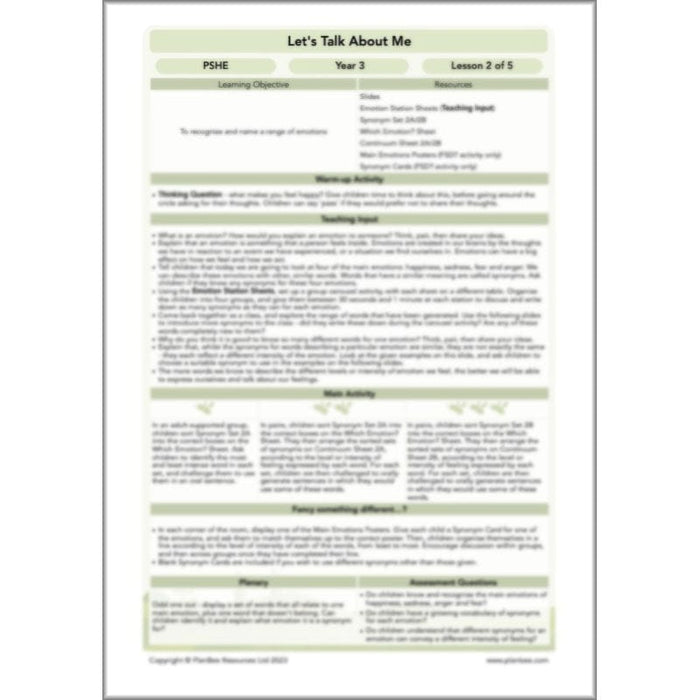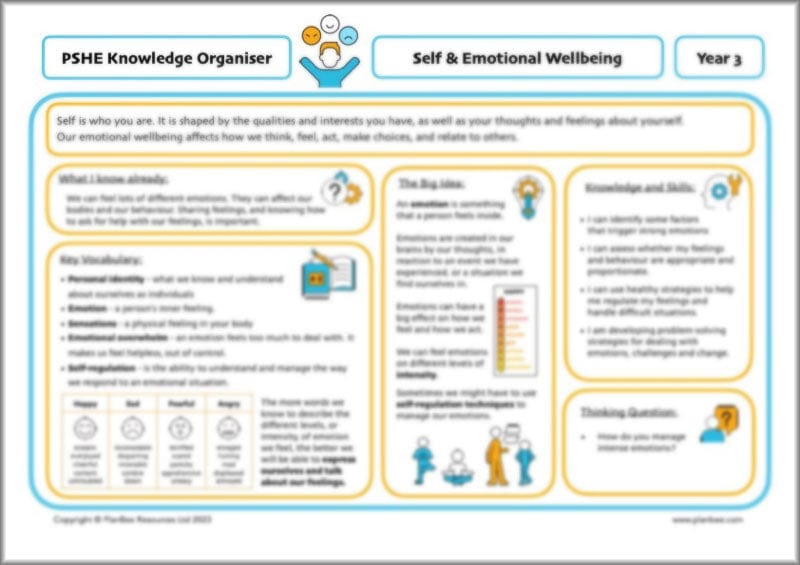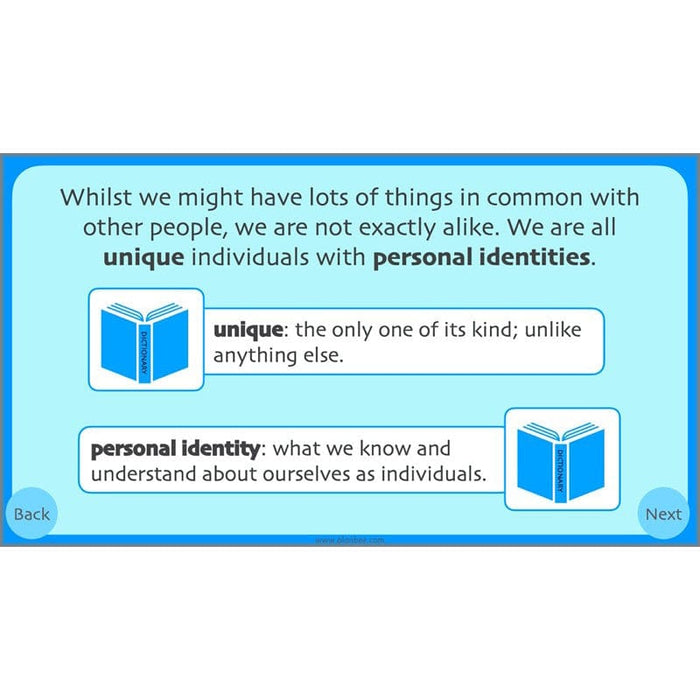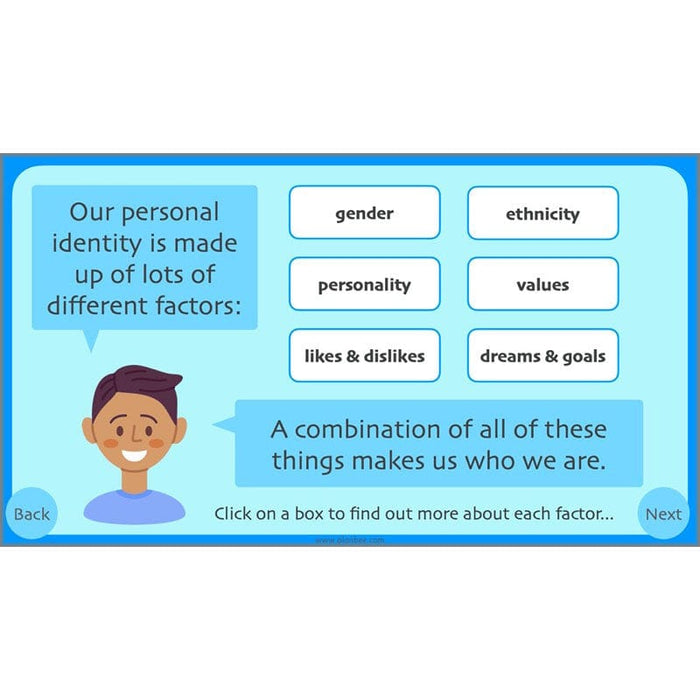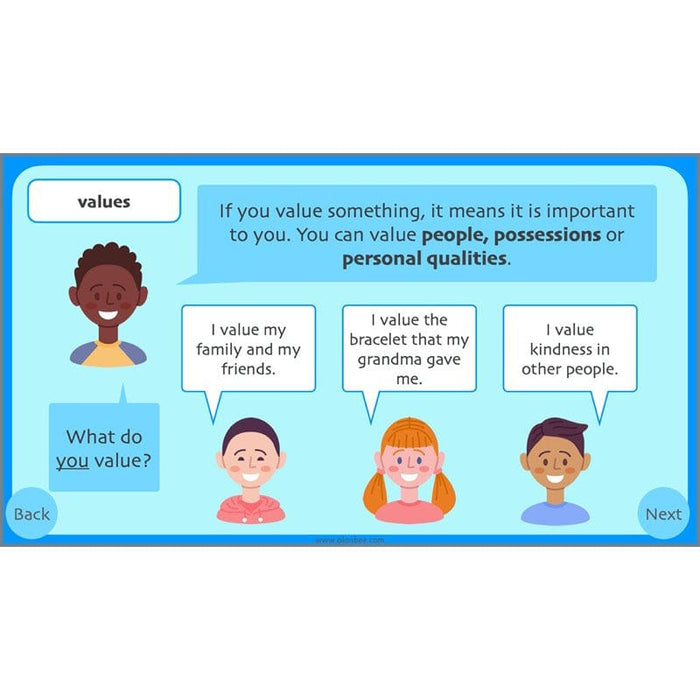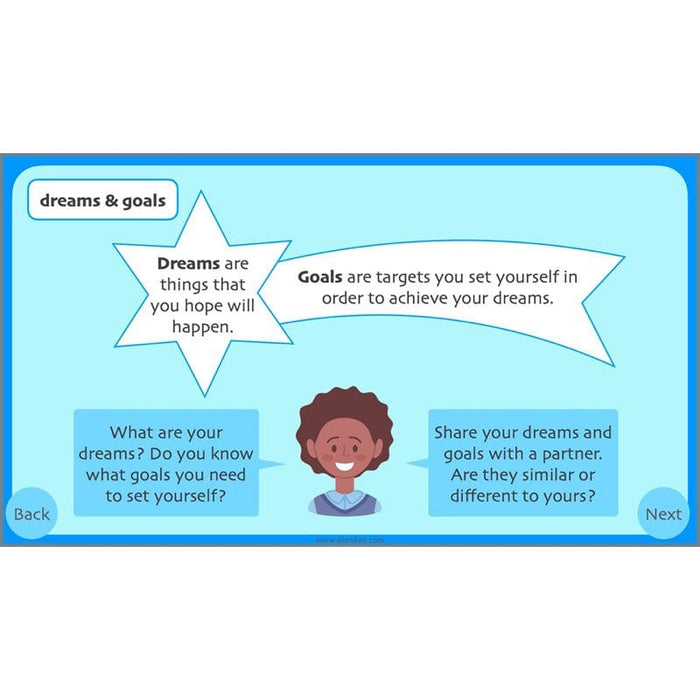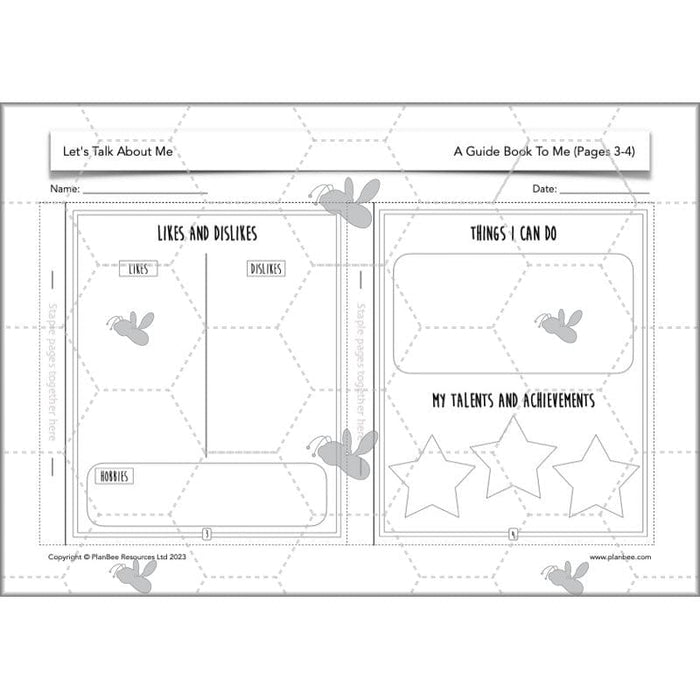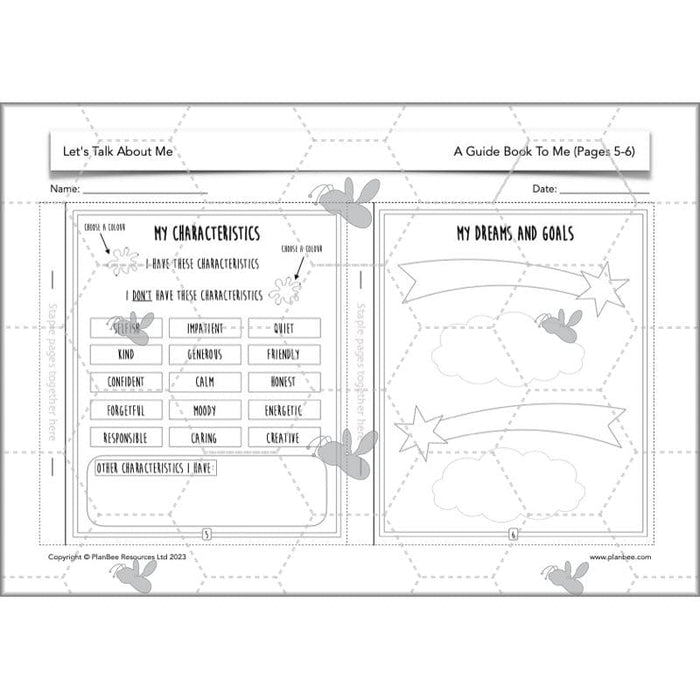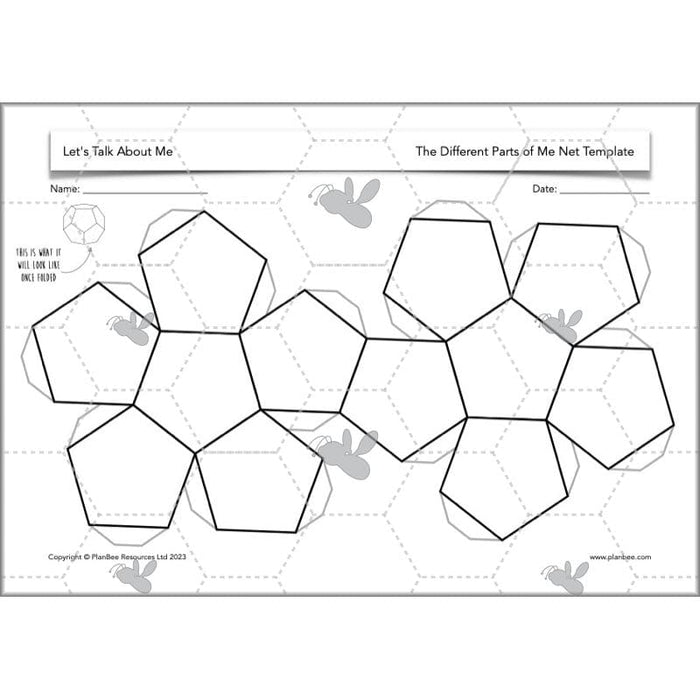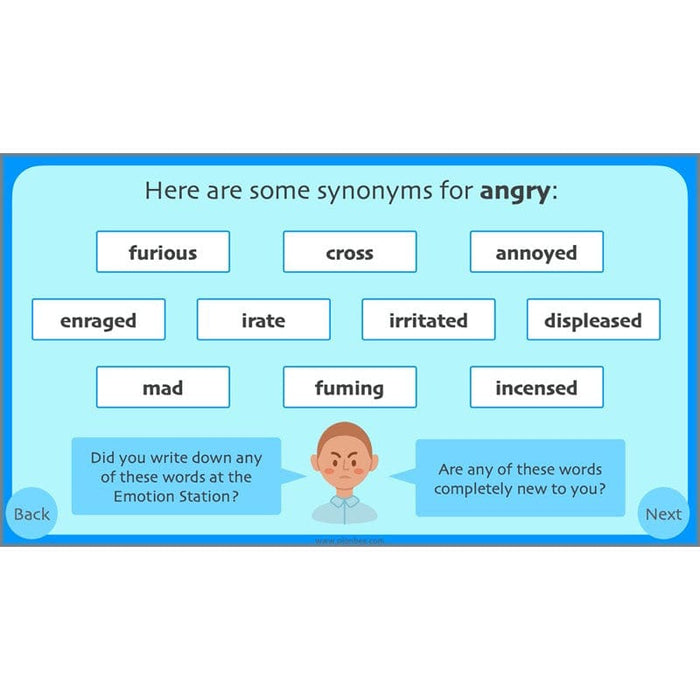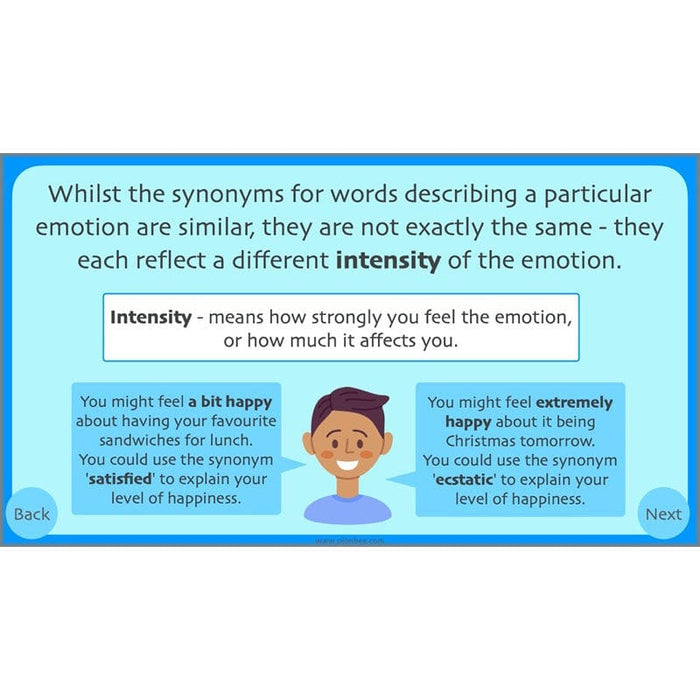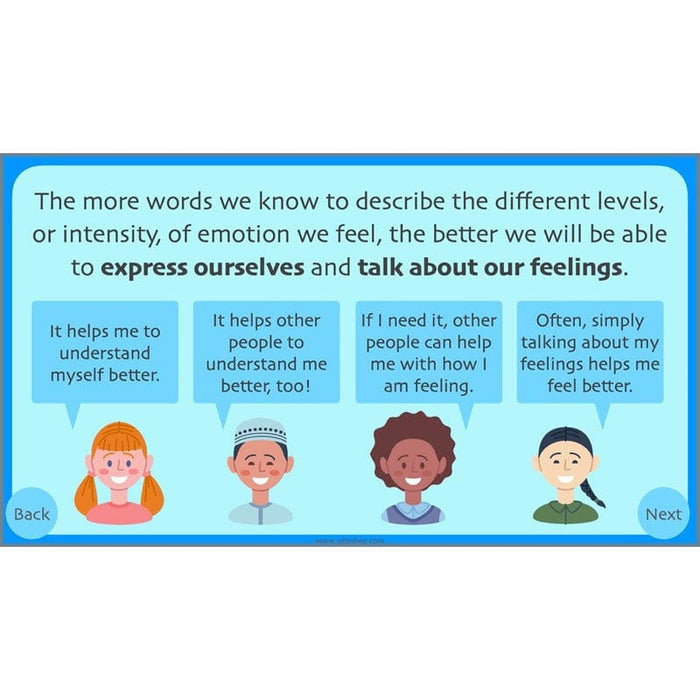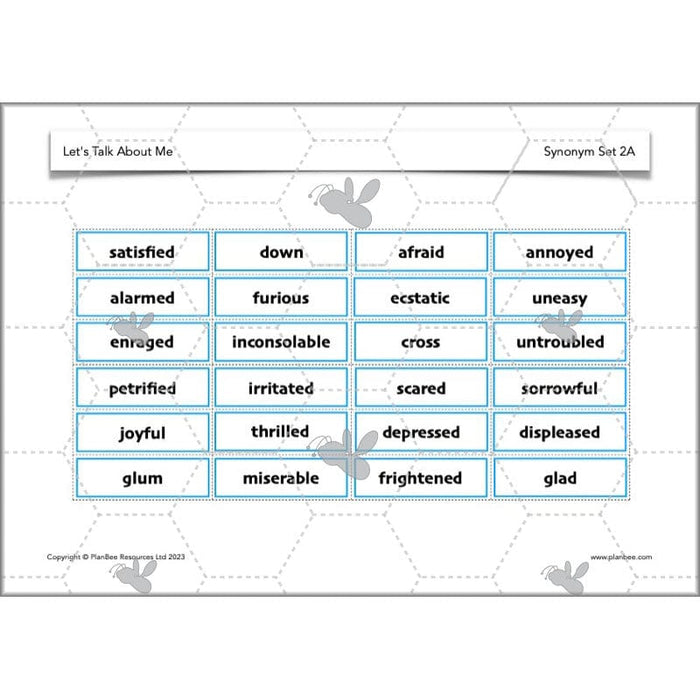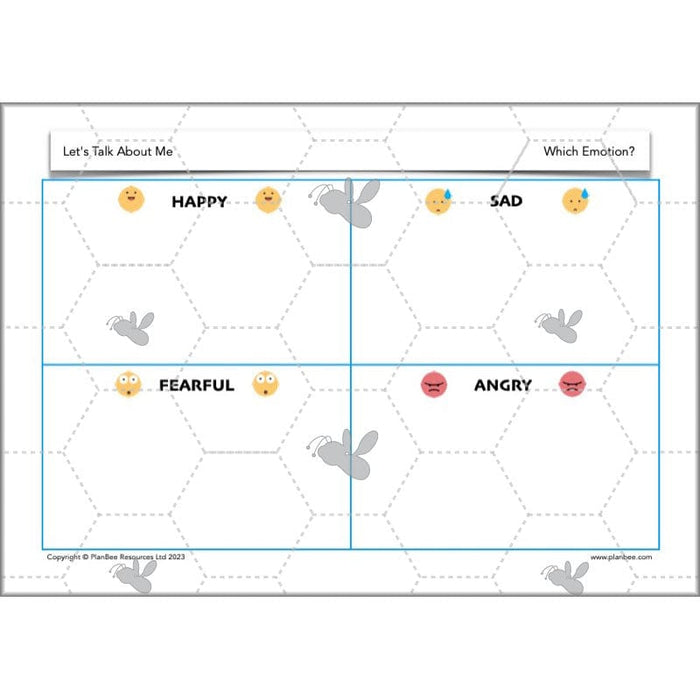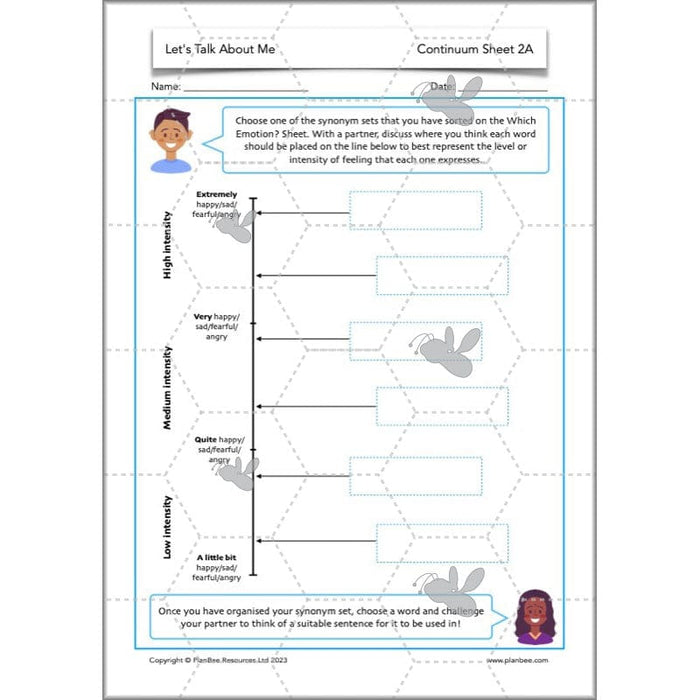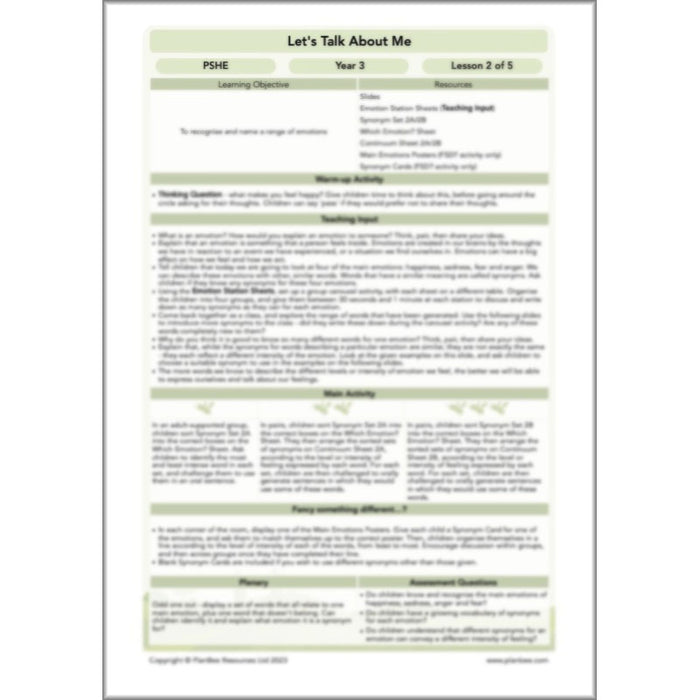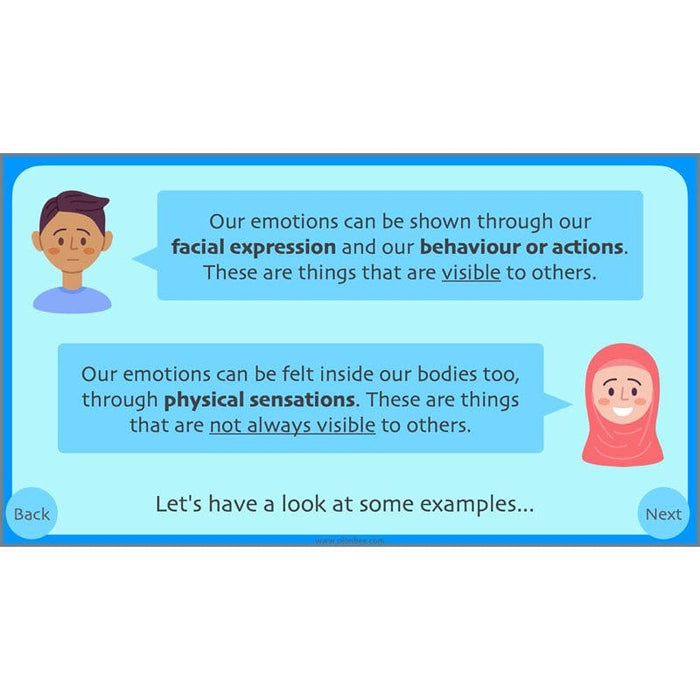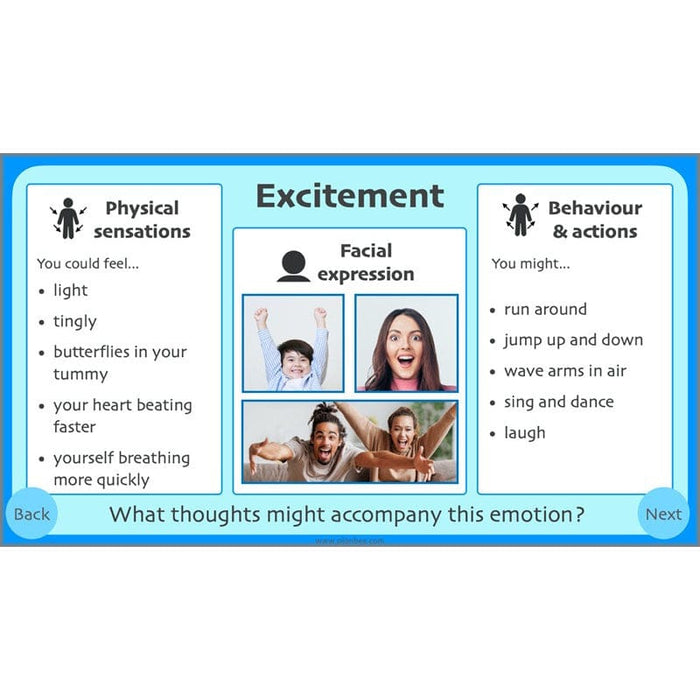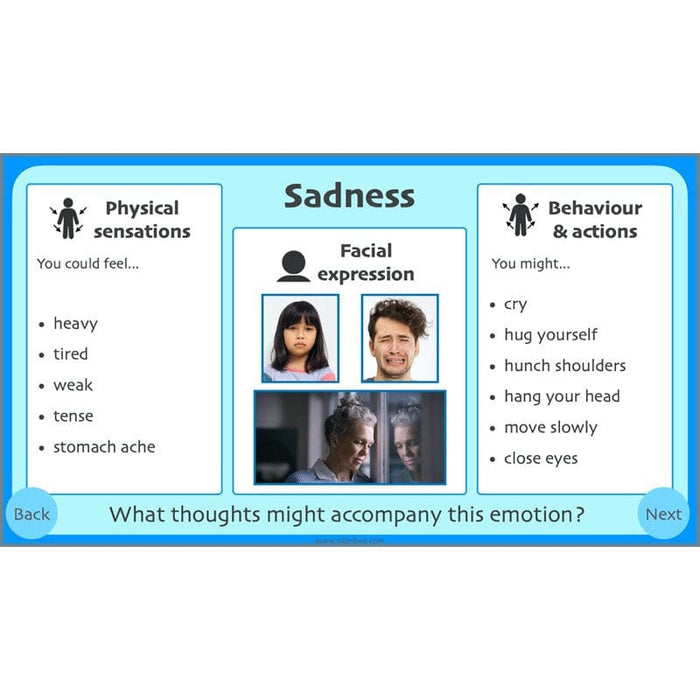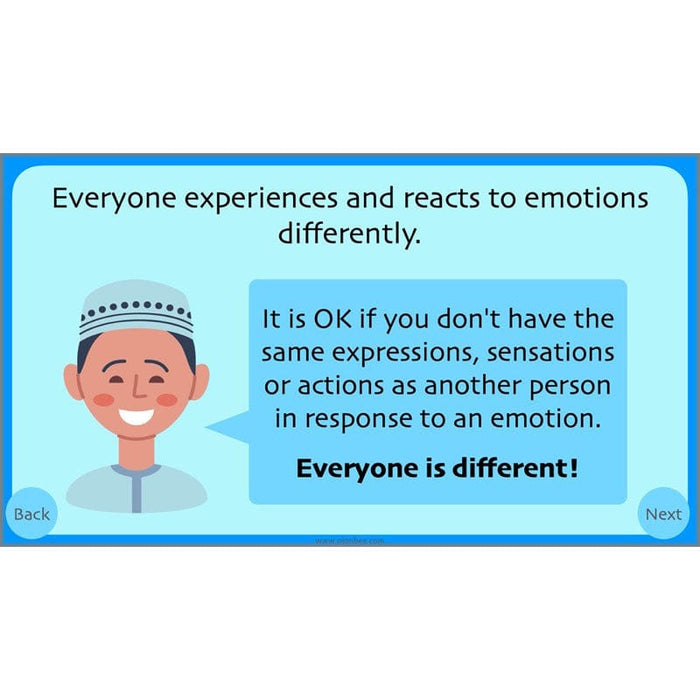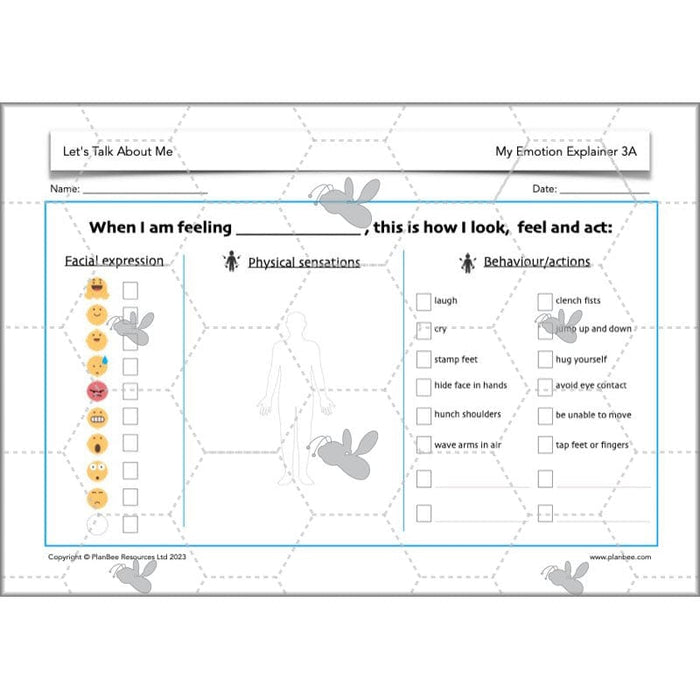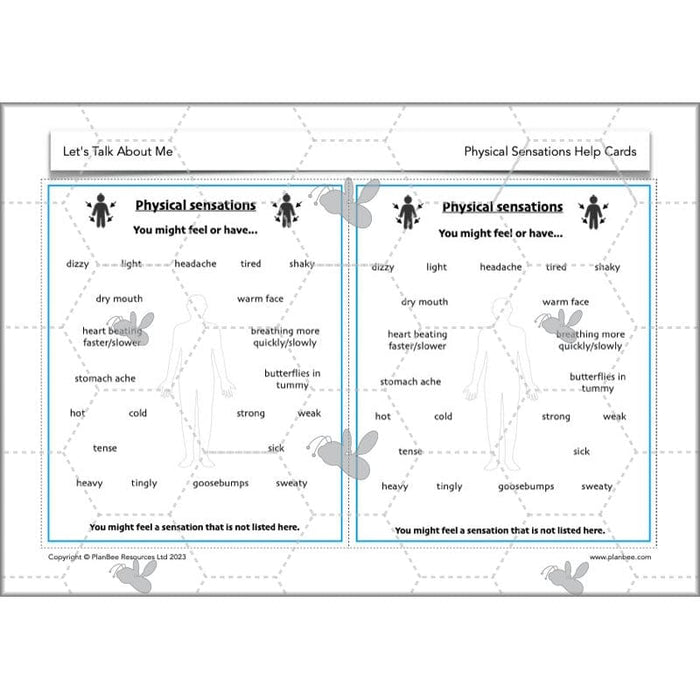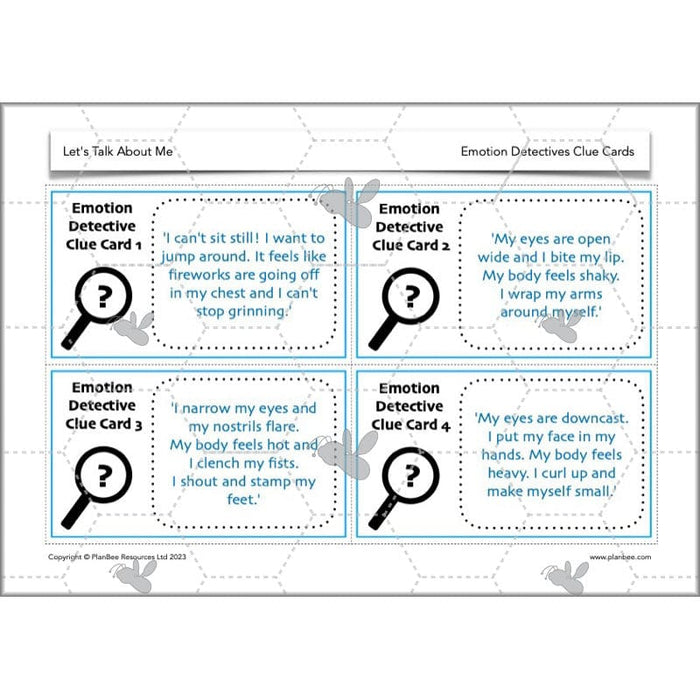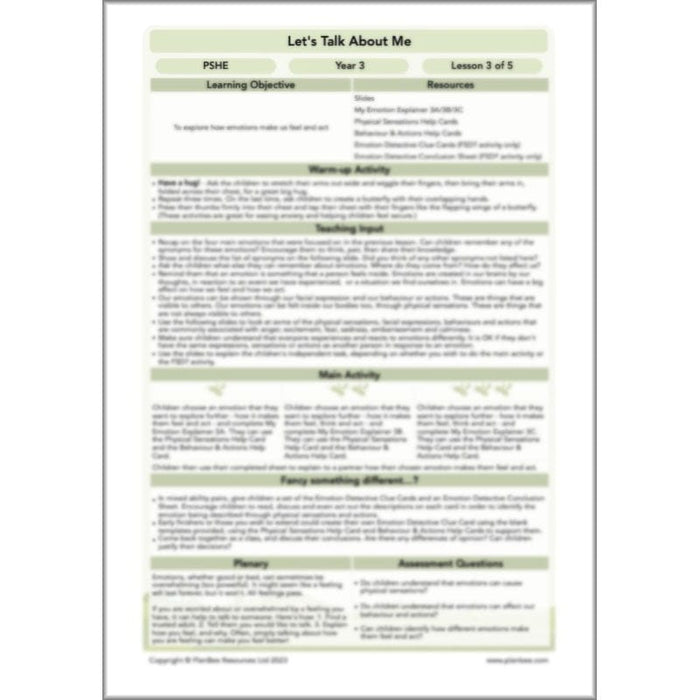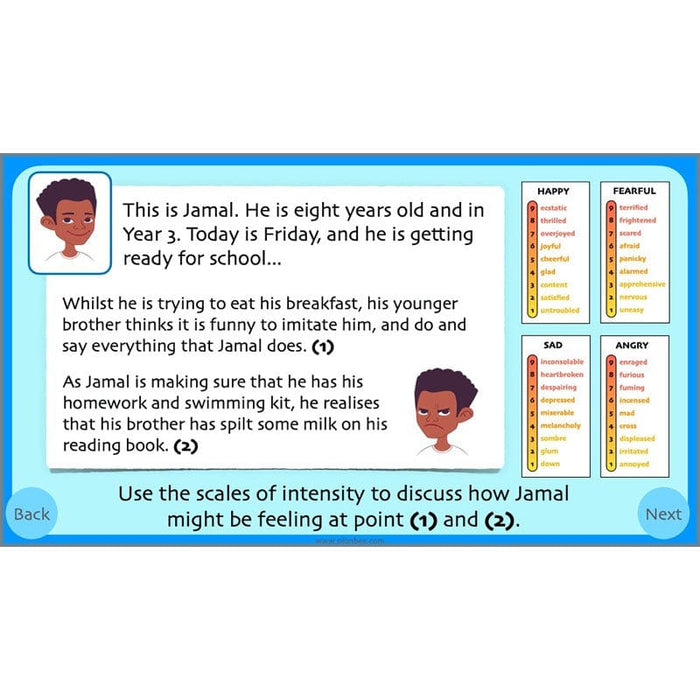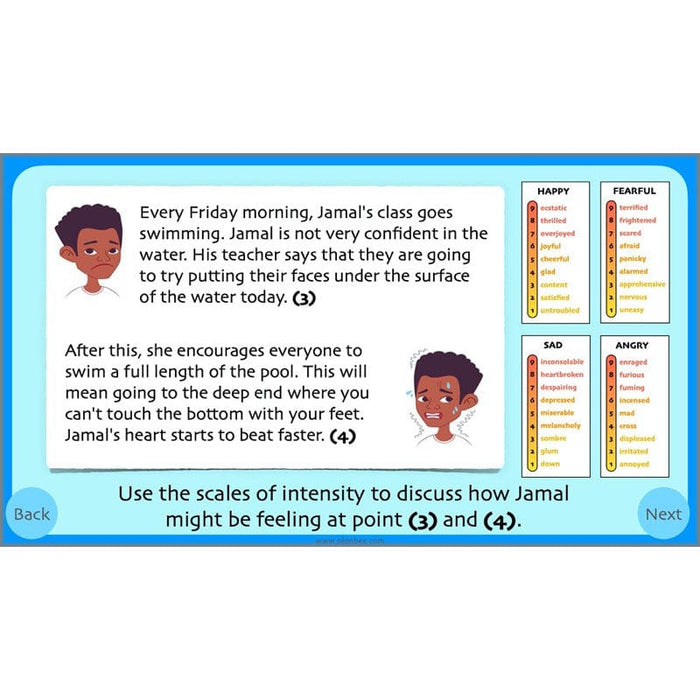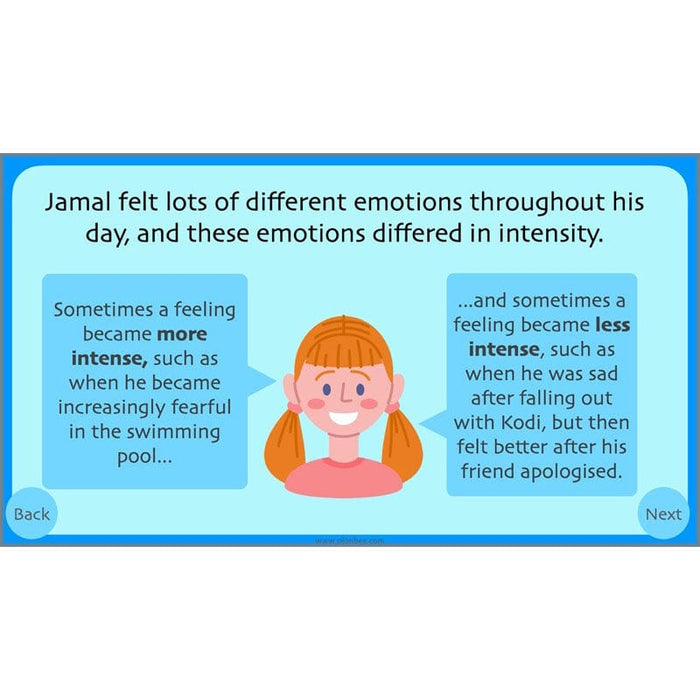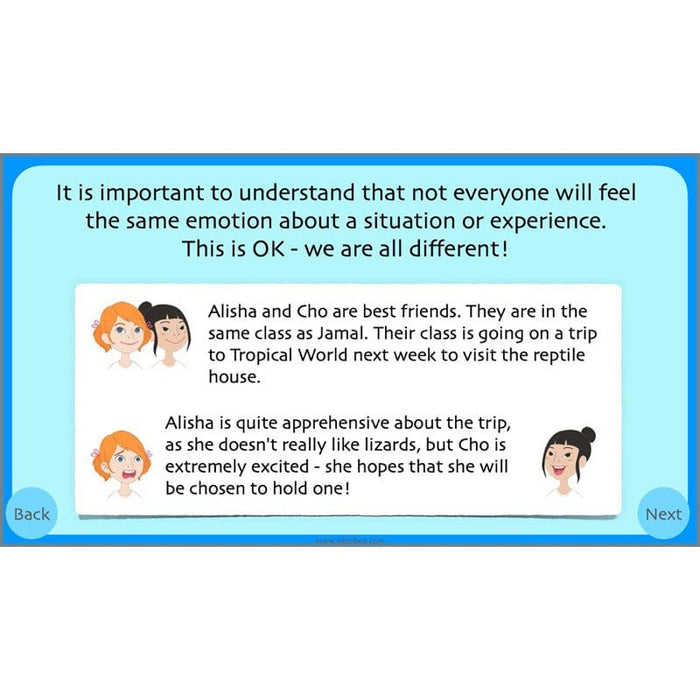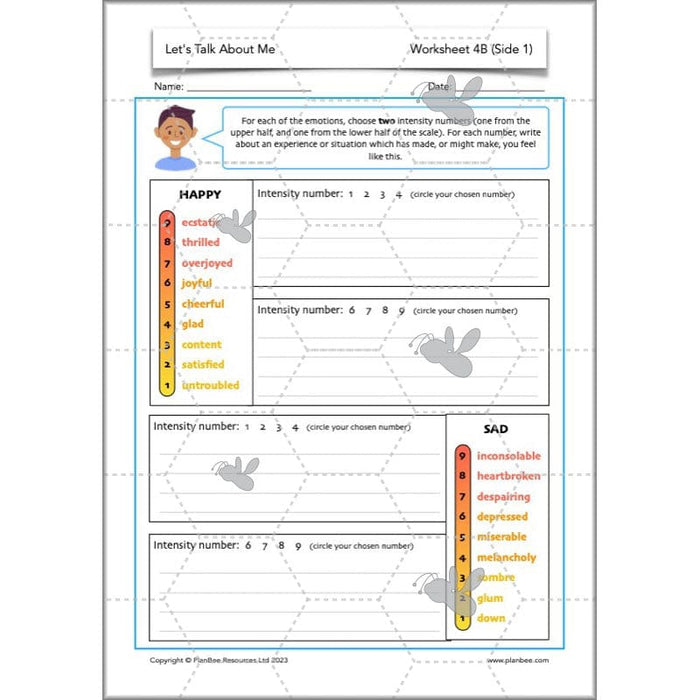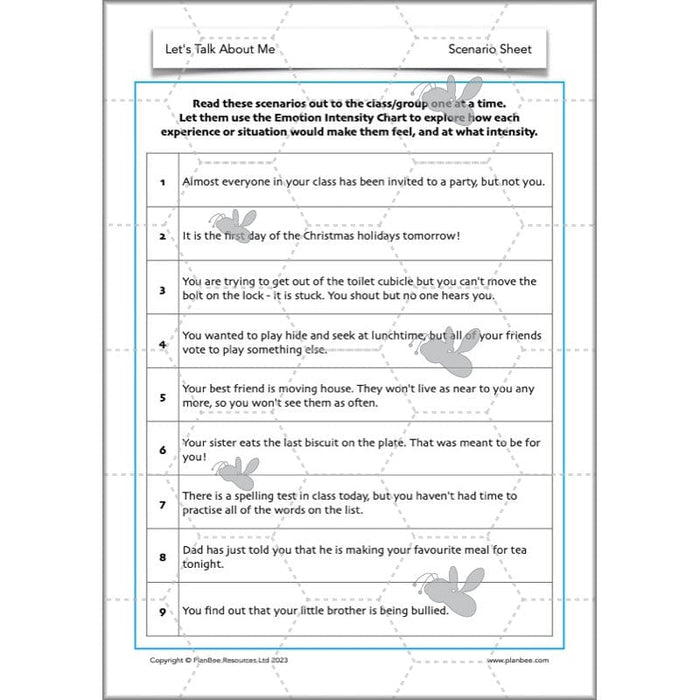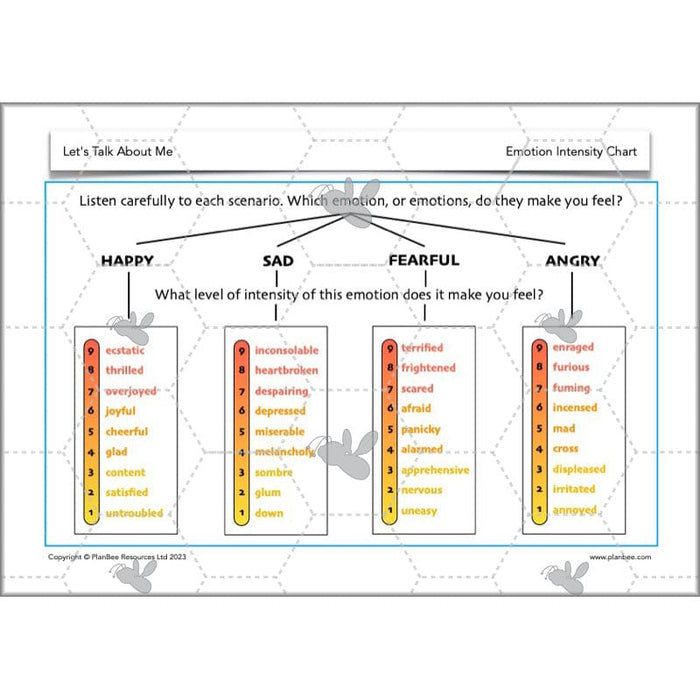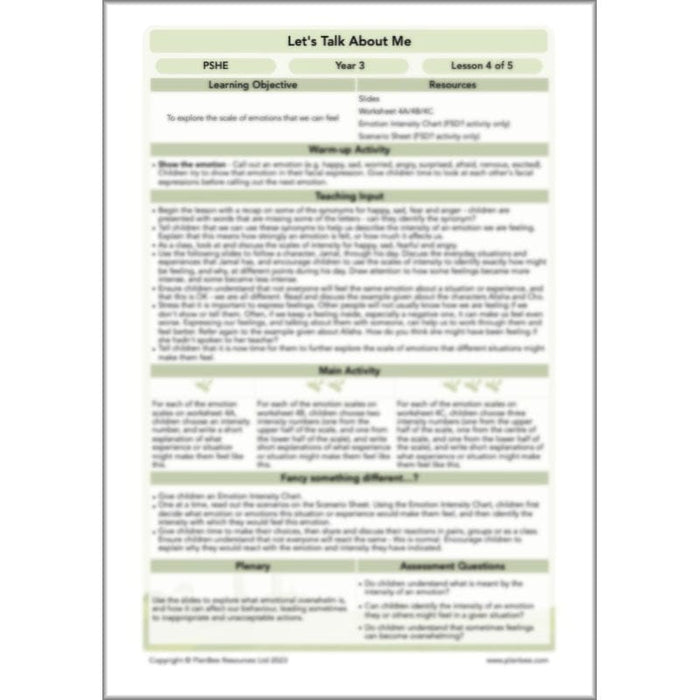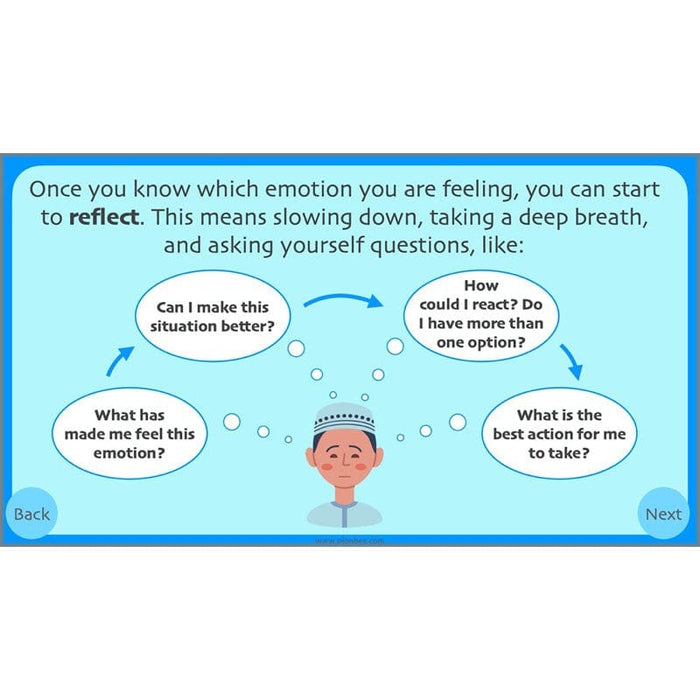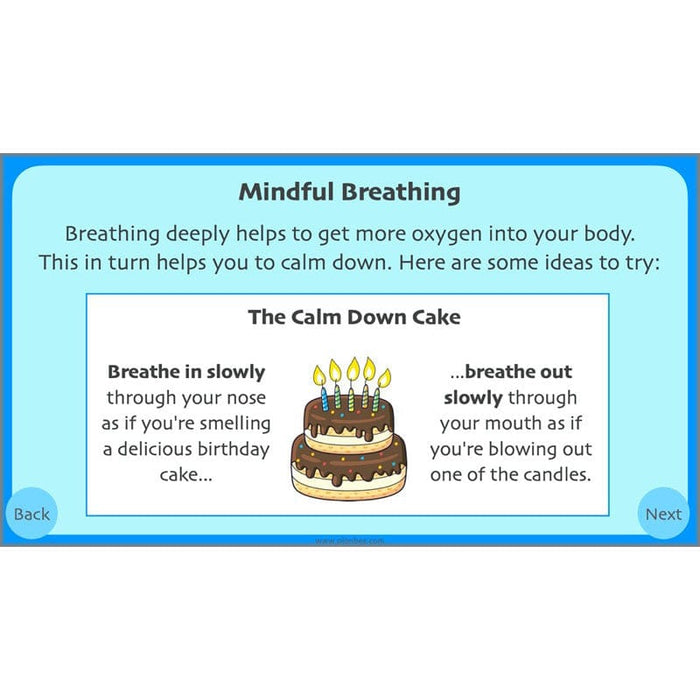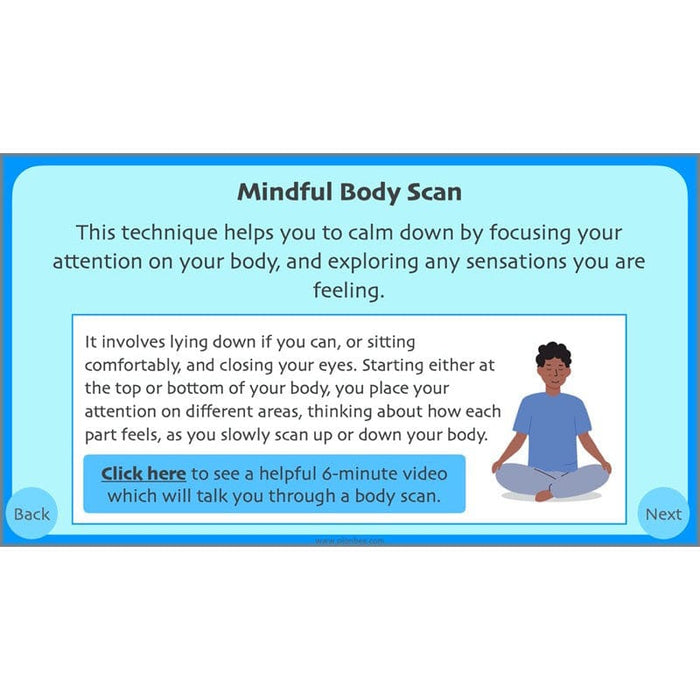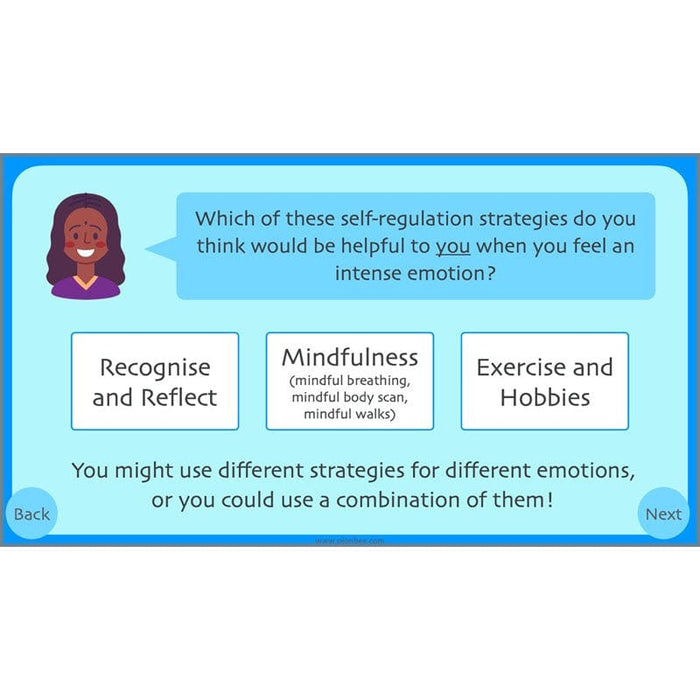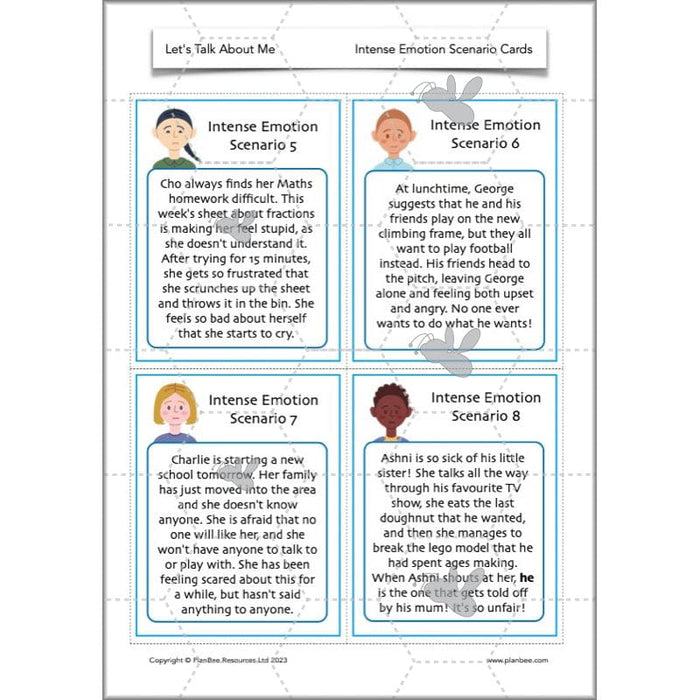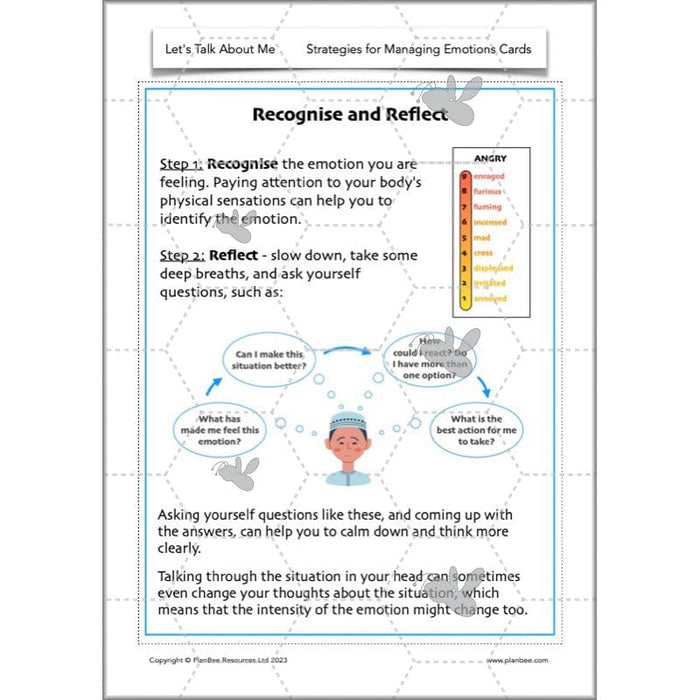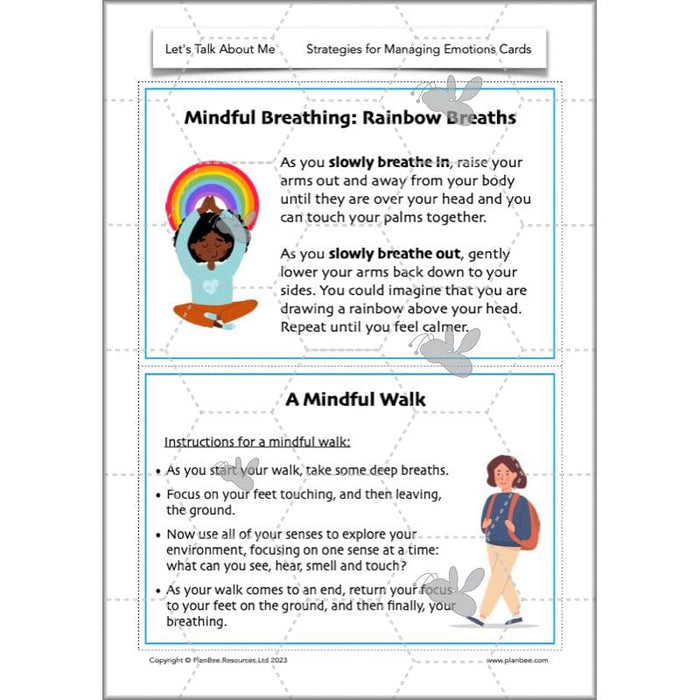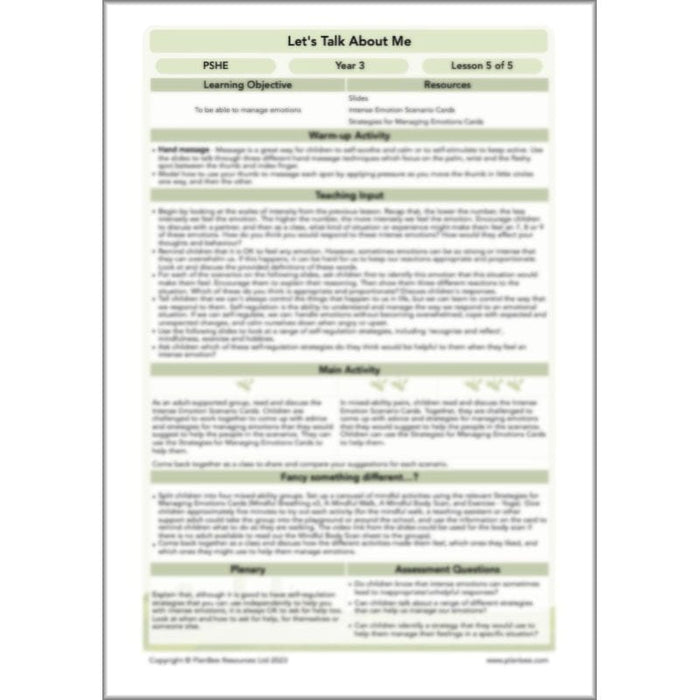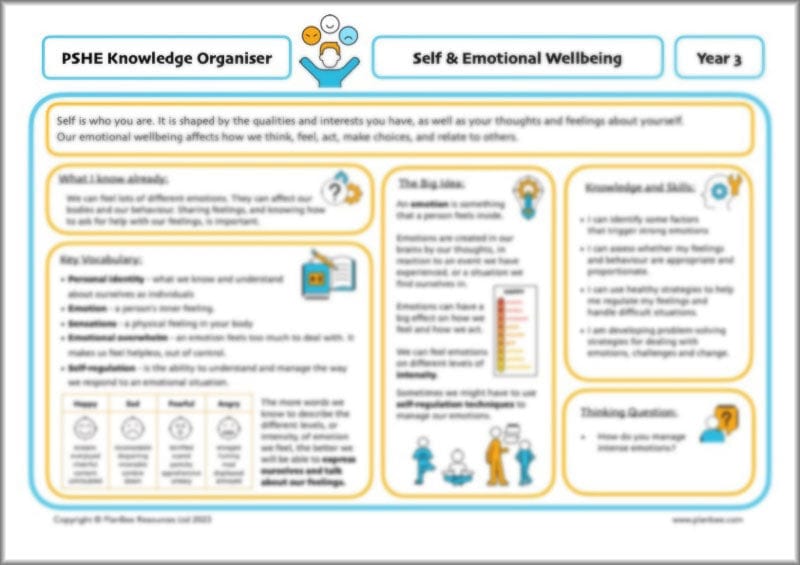#TheCompleteSeries5lessons
To begin this scheme which focuses on self and emotional wellbeing, your class will first explore what personal identity means, and all of the factors that make us who we are as individuals. The following lessons focus on emotions. Children will look at the range of vocabulary we can use to express how we feel, and how different emotions can lead to different facial expressions and bodily sensations, and affect our behaviour and actions. Children will understand that we can feel very intense emotions, and as a result, sometimes our responses are not appropriate or proportionate. They will explore a range of strategies that can help them to self-regulate and manage their emotions.
Each of these five ready-to-teach Year 3 PSHE lessons includes an easy-to-follow plan, engaging and informative slides, and a variety of resources.
#Lesson1PersonalIdentity
In this first lesson, children will explore the concept of personal identity, and look at some of the different factors that contribute towards this.
After reading Can I Build Another Me? by Shinsuke Yoshitake as a class, which highlights how we are all unique, children then create their own booklet, entitled, 'A Guide Book to Me.' In the alternative activity, children create a dodecahedron, which shows a different part of their personal identity on each face.
This Personal Identity KS2 lesson pack includes an easy-to-follow plan, a set of informative slides for the teaching input, and a variety of printable resources for the children's independent activities.
What's included:
- Lesson plan
- Slides
- Activity ideas
- A Guide Book To Me
- The Different Parts of Me Net Template
#Lesson2NamingEmotions
As a class, children will first discuss what emotions are, before looking in more detail at the vocabulary we can use to express four of the main emotions: happiness, sadness, fear and anger.
After exploring and discussing a range of different words for these four emotions, children are tasked to sort and order a set of given synonyms according to the level or intensity of emotion they think is expressed by each word. They are encouraged to use the different words in oral sentences.
This Naming Emotions KS2 lesson pack includes everything you need for a successful PSHE lesson: a detailed plan, a set of engaging slides for the teaching input, differentiated activity ideas and printable resources.
What's included:
- Lesson plan
- Slides
- Activity ideas
- Emotion Station Sheets
- Synonym Sets
- Which Emotion? Sheet
- Continuum Sheets
- Main Emotions Posters
- Synonym Cards
#Lesson3FeelingEmotions
After recapping the vocabulary used for happiness, sadness, anger and fear in the previous lesson, children will focus on how different emotions can be shown through our facial expressions, how they can be felt as physical sensations, and how they can affect our behaviour and actions.
In their independent activities, children will choose one emotion to explore in depth, to discover how it makes them feel and act. In the alternative activity, children become 'emotion detectives', and decipher clues relating to an emotion based on physical sensations or actions.
This Feeling Emotions KS2 lesson pack includes an easy-to-follow plan, a set of informative slides for the teaching input, differentiated activity ideas and a range of printable resources.
What's included:
- Lesson plan
- Slides
- Activity ideas
- My Emotion Explainer
- Physical Sensations Help Cards
- Behaviours & Actions Help Cards
- Emotion Detective Clue Cards
- Emotion Detective Conclusion Sheet
#Lesson4ExperiencingEmotions
In this lesson, children will explore what is meant by the intensity of an emotion.
They will use given intensity scales for happiness, sadness, fear and anger to explore how a character might feel in different scenarios. In their independent activities, children use the intensity scales to identify experiences or situations that might make them feel different intensities of emotions.
This Experiencing Emotions KS2 lesson pack includes everything you need for a successful PSHE lesson: an easy-to-follow plan, a set of informative slides for the teaching input, differentiated activity ideas and a range of printable resources.
What's included:
- Lesson plan
- Slides
- Activity ideas
- Differentiated worksheets
- Emotion Intensity Chart
- Scenario Sheet
#Lesson5ManagingEmotions
In this final lesson, after recapping on how intense feelings can lead to emotional overwhelm, children will explore different strategies that they can use to manage their emotions.
As a class, children will first explore what is meant by an appropriate and proportionate response to an emotional situation. They will understand whilst we can't always control the things that happen to us in our lives, we can learn to manage how we respond to them through self-regulation. As a class, children will then look at different self-regulation strategies, before applying this knowledge in their independent activities.
This Managing Emotions KS2 lesson pack includes an easy-to-follow plan, a set of informative slides for the teaching input, differentiated activity ideas and a range of printable resources.
What's included:
- Lesson plan
- Slides
- Activity ideas
- Intense Emotion Scenario Cards
- Strategies for Managing Emotions Cards
#KnowledgeOrganiserLetsTalkAboutMe
This Year 3 PSHE Knowledge Organiser has been created to complement our PSHE Self and Emotional Wellbeing strand. It is designed to support your children’s understanding of key vocabulary linked to this scheme of work. A thinking question and a big idea have been included to encourage your children to think deeply about this topic.
Free Overview (Medium-Term Plan)
Download a free overview to support your teaching of this scheme of work.
Free Assessment Grid
Download a free assessment grid to support your teaching of this scheme of work.
Curriculum Objectives covered
Mental wellbeing objectives:
- that there is a normal range of emotions (e.g. happiness, sadness, anger, fear, surprise, nervousness) and scale of emotions that all humans experience in relation to different experiences and situations.
- how to recognise and talk about their emotions, including having a varied vocabulary of words to use when talking about their own and others’ feelings.
- how to judge whether what they are feeling and how they are behaving is appropriate and proportionate.
- where and how to seek support (including recognising the triggers for seeking support), including whom in school they should speak to if they are worried about their own or someone else’s mental wellbeing or ability to control their emotions (including issues arising online).
